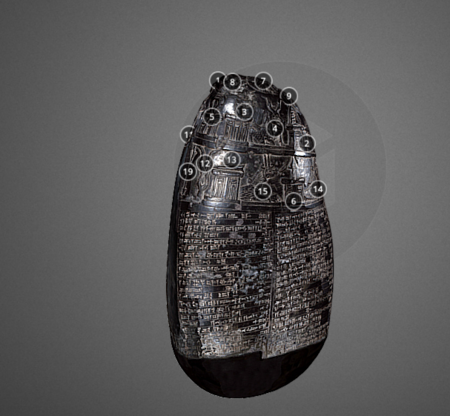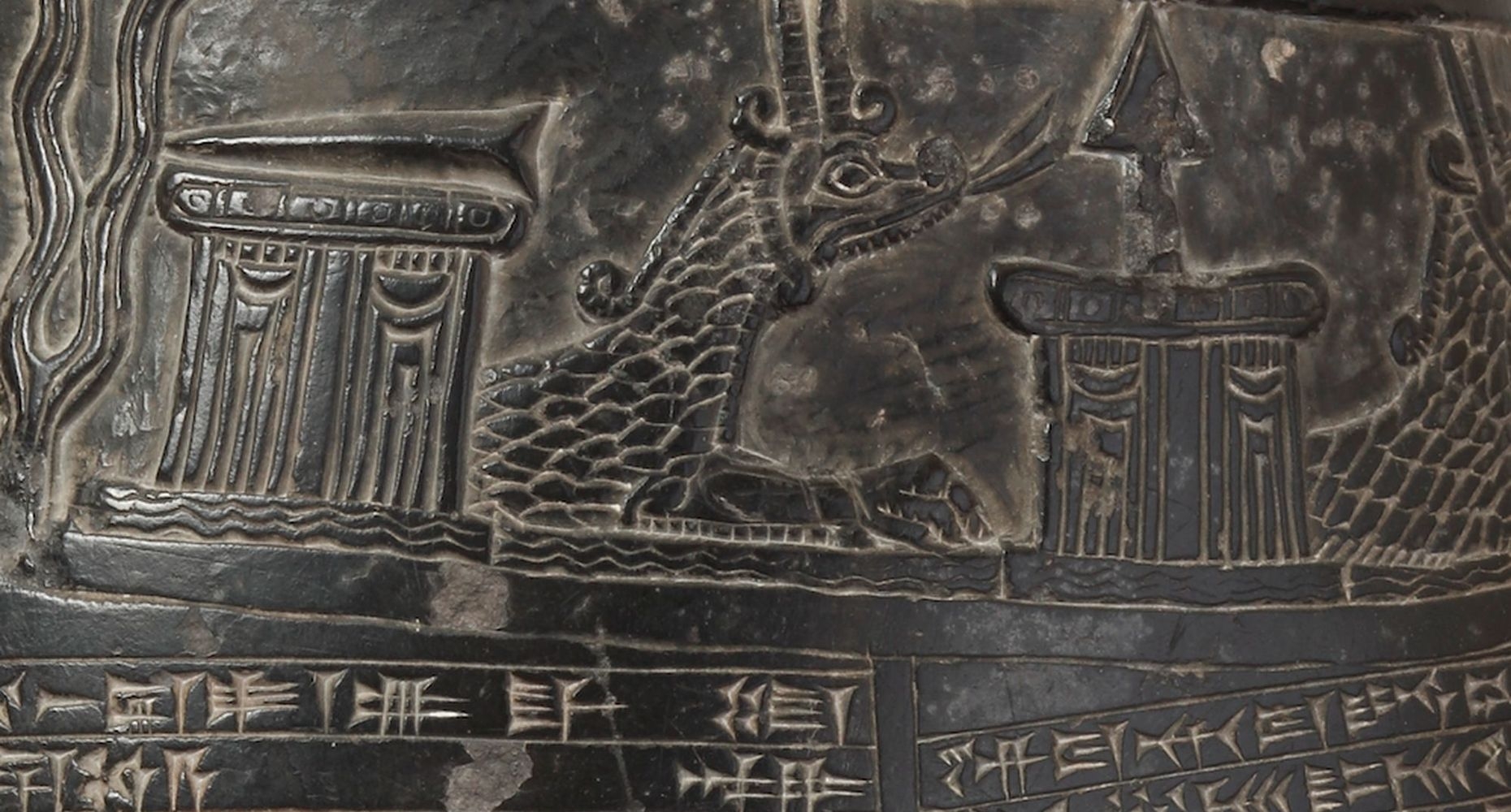The Caillou Michaux explained in 3D

Invented by the Sumerians in the 4th millennium BCE, cuneiform writing was used, like our Latin alphabet, to write texts in the different languages of the ancient Near East. It appears on tablets, stelae and statues, and sheds a fresh light on past societies.

Cuneiform writing forms the basis of this collection. Invented by the Sumerians and taken up by the Akkadians, this writing system was used to transcribe several Semitic and Indo-European languages. Let’s take a closer look at four major works from the history of Mesopotamia…
The first monument inscribed in cuneiform to reach Europe, this stele (kudurru) dates to the end of the 2nd millennium BCE and records the donation of a plot of land by a father to his daughter on her marriage. It sheds light on the social practices of the time and its religious beliefs by placing a curse on whoever damaged the stele. Discovered by the botanist André Michaux in 1784 on his scientific expedition to the Near East, this “caillou" or “stone" has retained its name and is kept in the Cabinet des Médailles at the Bibliothèque nationale de France.
In 714 BCE, the Assyrian king Sargon II launched an assault on the Urartian empire, on the other side of the Zagros mountains (present-day Turkey). The tablet recounting this victorious campaign, written by the king’s chief scribe, is both a military report and a form of propaganda to the glory of the Assyrian empire. It gives an idea of the fascinating and terrifying sights and smells experienced by Sargon’s armies.
With its monstrous part-man, part-animal appearance, this creature, described as the "king of the demons" in the inscription on the back of the statuette made an impression on both Assyria in the 1st millennium BCE, and the present through the filmThe Exorcist and the illustrated novel Adèle Blanc-Sec. The statuette reveals the role played by Pazuzu in the imagination of the Assyrians: both demon and protector against evil, and part of the arts of divination and exorcism.
What is the relationship between the Tower of Babel and this cuneiform inscription describing mathematical exercises dated to the 3rd century BCE? The Esagil tablet, a text widely circulated in Babylonia until the Hellentistic period, contains the dimension of the ziggurat dedicated to the cult of the god Marduk, in Babylon. It helped forge the myth of this building, “the House of Foundation, of Sky and Earth", which passed into posterity as a Bible story.